Click here to register for summer batches of robotics. Click here for details of courses.
- What is Cathode Ray Tube (CRT)? Explain with diagram
- How deflection system in CRT work? Explain with diagram
- What is fluorescence, Phosphorescence & Persistence in terms of CRT?
- How the circuit of CRO works? Explain working of each block with block diagram
- How to use the front panel controls of Cathode Ray Oscilloscope?
- How to measure AC/DC voltage & current using CRO? Explain with diagrams
- How to measure frequency & phase using Lissajou’s patterns on CRO? Explain with diagrams
- How digital multimeter works? Explain with diagram
The cathode ray oscilloscope is a versatile laboratory instrument. If a laboratory has only CRO in it, other measuring instruments may not be required. Using CRO, we can very accurately measure, AC/DC voltage, AC/DC current, resistance, phase and phase difference between two or more waveforms, relative frequency of a waveform, observe the amount of noise present on a signal, etc. In addition, CRO is also useful to observe the shape of waveform or signal and observe its real time progression on time axis.
Cathode Ray Tube (CRT)
CRT i.e. cathode ray tube is the most important part in CRO. It is made up of thick glass (with vacuum inside) and it is shaped like a funnel. There are number different electrodes inside the CRT.
The working of each electrode is given below. The description of each electrode from left to right of the CRT is given below –

- Connecting pins: These pins are internally connected to different electrodes inside the CRT.
- Sealing base: After fitting all electrodes in CRT, vacuum is created in it and then it is sealed.
- Filament: The filament is used to heat up the cathode fitted on it indirectly. It is made up of resistive material like tungsten. It is connected to 6.3V AC.
- Cathode: It is used as the source of free electrons to produce electron beam. It is cylindrical in shape and made up of thick copper, closed at one end. It is connected high negative voltage (>20kV DC).
- Control grid: It covers the cathode. It is made up of thick copper. It is used to control the number of electrons in electron beam. The cathode is connected to variable negative voltage. It has tiny hole at the center. The electrons emitted from cathode come out from this hole. When electrons come out, they get diverged due to mutual repulsion.
- The three anodes: They are used to accelerate and focus the cathode electrons on screen. All the three anodes are hollow cylinders and fitted coaxially. They are connected to high positive voltage in decreasing order from left to right (approximately 80kV, 60kV and 40kV DC respectively).
- Deflection plates: There are four deflection plates i.e. two pairs: vertical deflection plates to deflect electron beam on screen, along y-axis and the horizontal deflection plates to deflect it along x-axis.
- Aquadag coating: It absorbs all the electrons bounced back from screen after striking on the screen. It is a thin metallic coating applied on funnel shape of CRT from inside. It is internally connected to last accelerating anode.
- Screen: The screen displays waveforms and patterns drawn on it, by the electron beam. It is coated with phosphor compound, from inside. When high speed electron beam strikes on it, the phosphor absorbs K.E. of electrons and emits photons from that point, where the beam strikes.
- Graticule: It is the measurement scale (or reference scale) of 1cm x 1cm printed on the screen from front side. It is used to measure the displacement of electron beam on screen and to calculate different parameters of waves and patterns. This scale is used with volt/div and time/div scale values.



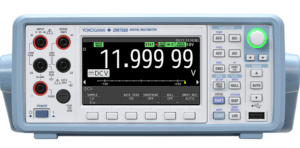
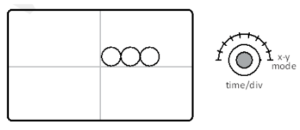
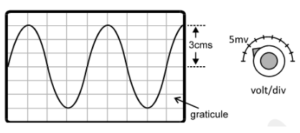

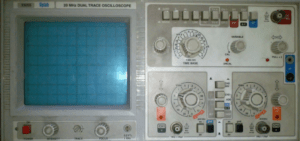
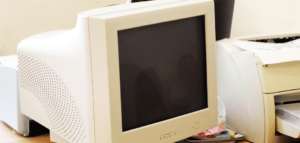
Very useful information, thanks!